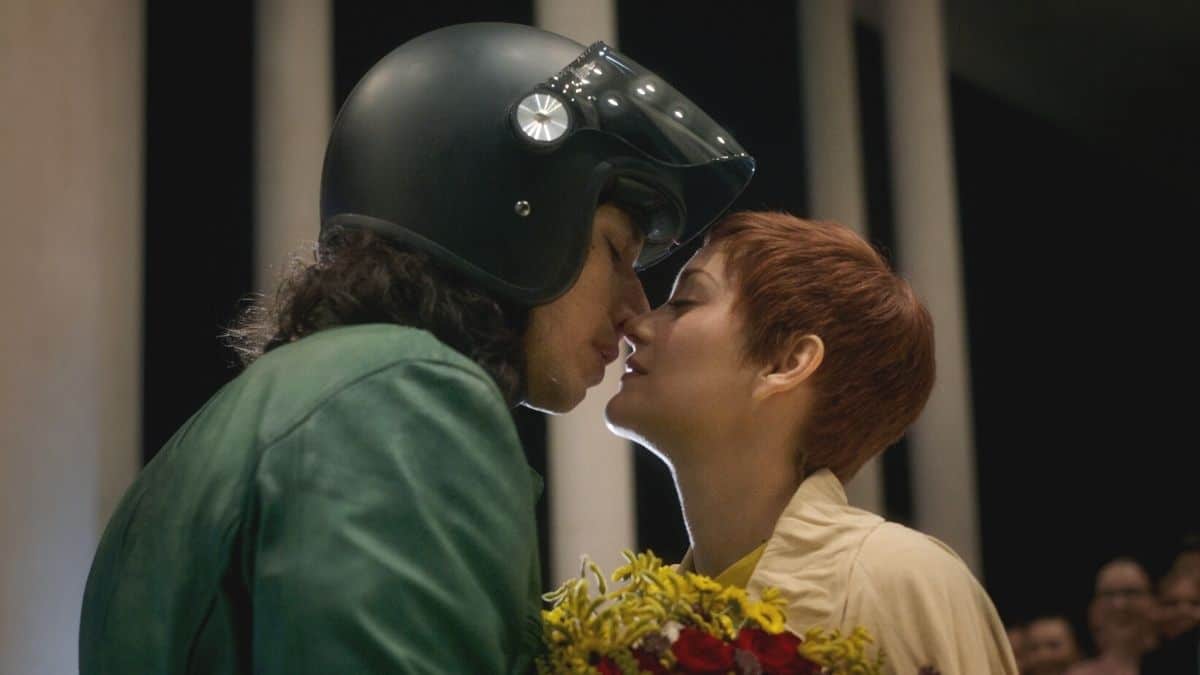
French director Leos Carax has revitalized the horny musical genre with his latest movie Annette. This steamy musical stars actors Adam Driver and Marion Cotillard as “mildly offensive” comedian Henry McHenry and opera singer Ann Desfranoux, two doomed lovers.
Watching Annette feels like a psychedelic trip, laden with dreamy musical sequences and sci-fi-esque imagery. The movie seems destined to grow a cult following, much like Rocky Horror Picture Show and the movie-turned-musical Heathers. Throughout the movie, Henry and Ann fall in love and make headlines as a popular celebrity couple. They express their love for each other through the painfully inept song “We Love Each Other So Much,” which featured the highly-covered singing cunnilingus scene.
The fictional couple’s demise is documented through quick cuts and synth-laced tunes as they find themselves welcoming a baby girl into their lives, going on picturesque vacations together and slowly turning against one another. While at its simplest roots, Annette is a dark story that has been told a hundred times before, but with Carax’s directorial expertise and a mindblowing script by the rock duo Sparks, this movie is far from ordinary.
The return of the horny musical
After first debuting on the opening night of the Cannes Film Festival, Annette has been breaking headlines. This movie marks Carax’s English-language debut in the film industry and is on the right track to earning him numerous Hollywood awards. For musical theater fans, this movie offers a tantalizing storyline that’s somewhat reminiscent of Broadway’s Spring Awakening and Hedwig and the Angry Inch, in the sense that offers rocky tunes and messages against the status quo. For cult-classic followers, Annette has the unabashed sexiness shown in Rocky Horror Picture Show and the eerie weirdness praised in Little Shop of Horrors.
Annette brought sexy back to the movie musical community, differing itself greatly from the overproduced, PG pop musicals that have come out in the last few years, ie: In The Heights, La La Land and The Prom. As Carax has stated, Annette’s music doesn’t just drag the story along, but rather it gives the movie “another dimension.” Speaking about the production of Annette, Carax has said that he was drawn to the musical created by Ron and Russell Mael because “he loved the songs right away.”

Elaborating, he has shared, “You can direct a scene by following the music’s lead or by going against the music. You can mix all sorts of contradictory emotions, in a way that is impossible in films where people don’t sing or dance. You can be grotesque and profound at the same time. And even silence becomes something new and deeper,” and Annette proves that to be true.
As Henry’s career begins to grow overshadowed by his wife’s, he begins to spin out of control. His jokes no longer seem to stick and his acts grow increasingly darker as he publicizes his suicidal and homicide thoughts in an act called This Is How I Killed My Wife. Henry eventually turns to alcohol abuse. While his downfall is terribly sad and tragic, especially when juxtaposed against his family’s desperation for him to “bounce back,” the bright colors on the screen never fade and are often shown through bright pieces of clothing or an illuminating sunset. A stylistic, yet unnerving choice.
The songs also contrast heavily against the tone, the melancholic flow of a family falling apart is set aside when Henry has a violent outburst towards his audience. He repeatedly sings, “What’s your f**king problem,” a stark mood against its eventual transition to his wife singing a sad tune about lost love. Again, while this ebb and flow sound familiar, it’s much more jarring when combined with Carax’s magic (and the choice to portray the couple’s daughter, Annette, as a puppet).
Where did it go wrong?
To the avid consumer of “weird” art movies, there is little to be criticized when it comes to Annette. However, as made clear by numerous outlets who are reviewing this movie without taking its niche into consideration, the movie has a few rabbit holes that are easy to get lost in.

Firstly, the music is not for everybody. It’s unreliable and extremely repetitive. The music doesn’t tell the story, or even compliment it, which is strange due to the movie’s operatic storytelling. However, beloved musicals like the aforementioned Rocky Horror Picture Show also featured unchallenging songs with nonsensical lyrics, sprinkling in the occasional thought-provoking line. Annette takes a similar technique but additionally explores a variety of musical genres — adding, yet another, jarring element.
Secondly, the decision to make the couple’s young daughter, Annette, a marionette puppet fails to add anything to the story. Giving some brief insight, Carax has expressed, “It was a big risk and an exciting one. But were people going to accept a film in which a puppet suddenly appears and nobody ever mentions she’s a puppet? I don’t make naturalistic films. In the world of the film, she’s a real baby, but we can see right away that she’s not a baby of flesh and blood.” It’s possible to come to the conclusion that this choice is yet another challenge for the viewer to overcome in order to feel the full impact of the movie’s climax and conclusion. Although at some moments, it seemed to be more of a distraction than an artistic element.
Although it does fit in with my lingering thoughts about Annette: What’s the point of art if it doesn’t disrupt?
Check out our other movie reviews: The Night House and Monday.
Annette is currently streaming on Amazon Prime.